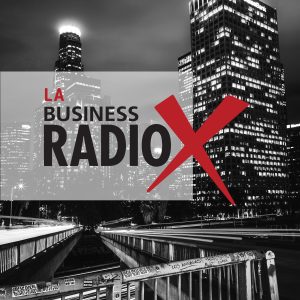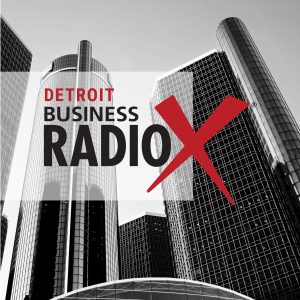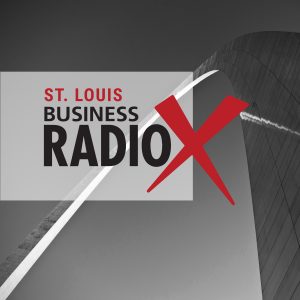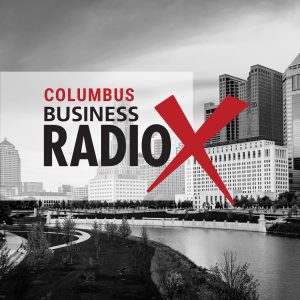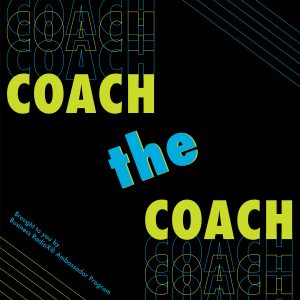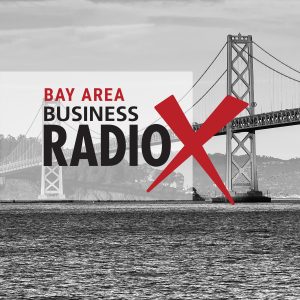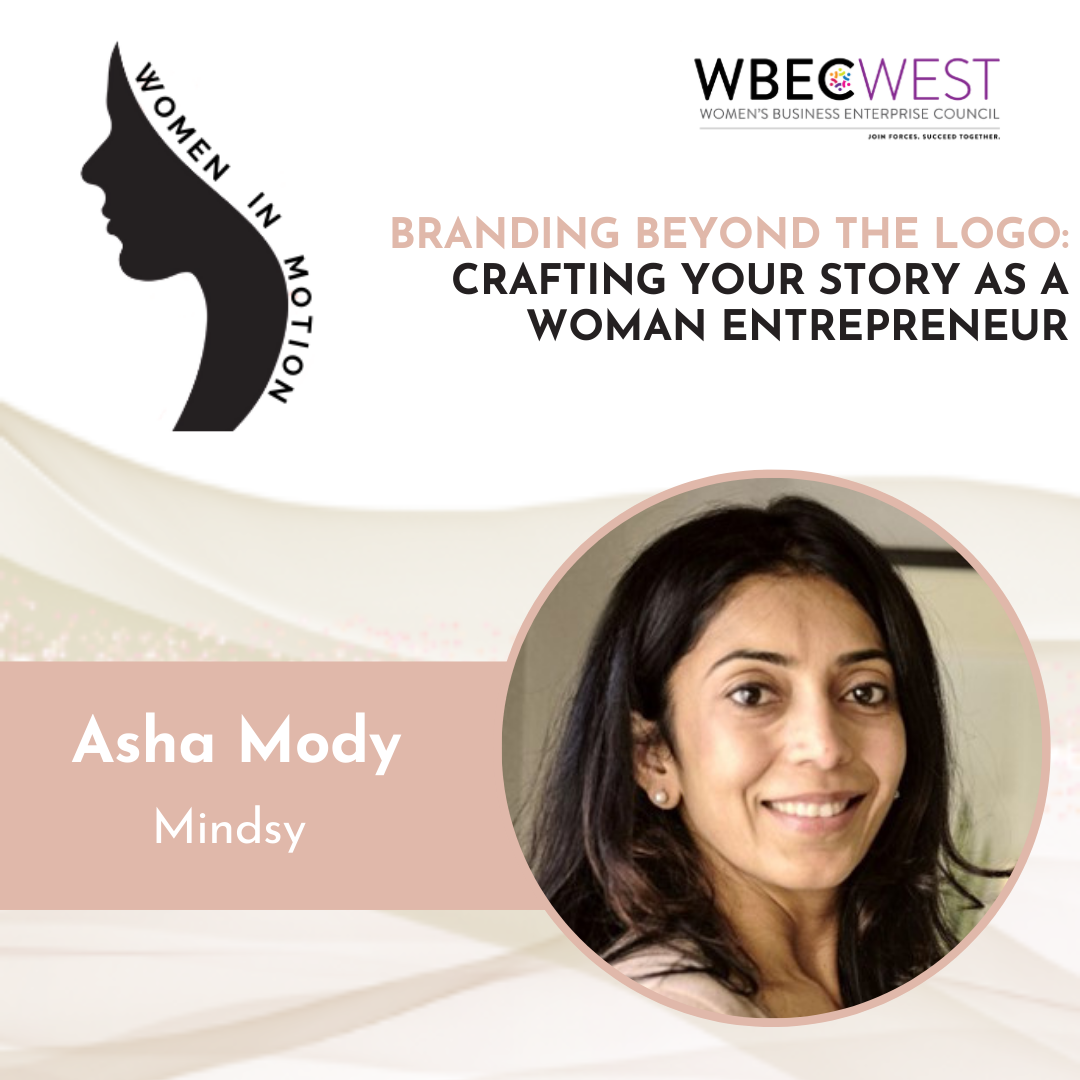
In this episode of Women in Motion, Lee Kantor interviews Asha Mody, founder of Mindsy, a branding studio in San Diego. Asha shares her journey as an immigrant and her mission to empower women entrepreneurs through strategic branding. She emphasizes the importance of a clear and intentional brand strategy, distinguishing between a logo and a brand. Asha discusses common branding challenges and offers advice for building a purposeful brand. She highlights her commitment to supporting women in business, sharing success stories and practical tips for entrepreneurs to achieve brand clarity and authenticity.
 Building a brand isn’t just an exercise in creativity—it’s an act of intention. Asha Mody, the visionary behind Mindsy Studio, is on a mission to transform the way we think about brands. With over 10 years of experience and a track record that’s as impressive as it is diverse, she’s helped women-led businesses, startups, and INC 500 companies craft brands that don’t just look good but feel right.
Building a brand isn’t just an exercise in creativity—it’s an act of intention. Asha Mody, the visionary behind Mindsy Studio, is on a mission to transform the way we think about brands. With over 10 years of experience and a track record that’s as impressive as it is diverse, she’s helped women-led businesses, startups, and INC 500 companies craft brands that don’t just look good but feel right.
Asha’s philosophy? Brands should be rooted in purpose and mindfulness. Her approach blends soul and strategy, stripping away the noise to uncover the essence of what makes a brand unforgettable. As a Strategist and Design Director, she’s worked magic across diverse industries—from plant-based food and natural beauty to health, coaching, and sustainability-focused businesses. Asha has elevated wellness brands to cult status, coached founders on mindful scaling, and brought clarity to the chaos for countless entrepreneurs.
Recognized by GDUSA and World Packaging Design, Asha doesn’t just create logos or taglines; she sculpts stories that resonate. Her secret? Deep human insight, strategic clarity, and a mindfulness-driven creative process that puts authenticity front and center.
When Asha isn’t crafting impactful brands, you can find her breaking a sweat with her two teenage boys at the gym, painting intuitive mixed-media masterpieces, or traveling with her life partner to discover creative coffee havens. Each experience fuels her passion for mindfulness and storytelling, helping her weave even richer narratives for her clients.
As a keynote speaker, course creator, and startup advisor, Asha has shared her expertise with communities worldwide. Her ultimate goal? To empower 1,000 women-led brands to scale their dreams while staying true to their values. Whether it’s breaking into Whole Foods or redefining an industry’s narrative, Asha builds brands that stand for something—and people remember them.
Connect with Asha on LinkedIn.
Music Provided by M PATH MUSIC
![]() This transcript is machine transcribed by Sonix
This transcript is machine transcribed by Sonix
TRANSCRIPT
Intro: Broadcasting live from the Business RadioX studios, it’s time for Women in Motion. Brought to you by WBEC-West. Join forces. Succeed together. Now, here’s your host.
Lee Kantor: Hi, Lee Kantor here. Another episode of Women in Motion. And this is going to be a good one. But before we get started, it’s important to recognize our sponsor, WBEC-West. Without them, we couldn’t be sharing these important stories. Today on Women in Motion, we have Asha Mody with Mindsy Design. Welcome.
Asha Mody: Thank you,Lee. Thank you. I’m excited for the show today.
Lee Kantor: Well, I am so excited to learn what you’re up to. Tell us about Mindsy Design. How are you serving folks?
Asha Mody: Mindsy Design is a branding studio in San Diego, California, and we help empower women entrepreneurs to design their branding, packaging and strategic approach to launch their product and services in the market.
Lee Kantor: So, what’s your backstory? How did you get involved in the branding business?
Asha Mody: Oh, that’s interesting. I grew up in India and came to the United States 20 years back. And when I came here as a minority immigrant woman, I didn’t have the working rights. So, I invested myself in educating myself for ten years, fighting my rights from… at White House. And finally, I got my immigrant working right ten years back. And I started working in a company as a graphic designer, where I saw that CEOs, CMOs, sales team, everybody is on very different pages, and they design just pretty looking design, doesn’t create the impact what company wanted to create. So, I learned about brand strategy. I got C-level Certified Brand Strategist and how design can create impact and meaningfully by aligning their purpose and their mission and vision on the one page. So, that’s why I designed because I believe that we can create a meaningful impact if we have all intentional strategy and we can communicate clearly with the audience, which, really, they need to hear.
Lee Kantor: Now, is that a mistake that you find, especially with young entrepreneurs or maybe not young by age but young by being an entrepreneur, is they confuse maybe their logo with their brand. Like, they don’t really understand the brand stands for something a lot more than just what their logo might look like.
Asha Mody: Yeah. So, I like this question a lot. The logo or tagline, it’s just the one part of the brand. It’s not the brand. Brand is something. It’s your gut feeling. I ask this question, when you are not present in the room, what do people say behind your back? What is the gut feeling that you are creating it? That’s called the brand. For example, owners, founders, or sales team or marketing team, they cannot be always in the store selling your product, right? So, when you are not present, what do you want to create the feeling behind your back? That’s trust. That’s authenticity. That is the brand, when people feel really connected and they feel to join your tribe.
Lee Kantor: And brand is something that even if you’re not mindful about it, it’s still happening, right? So, you might as well be mindful about it.
Asha Mody: I agree, because if you are not mindful and intentional about it is a secret of crafting the brand messaging and how it resonated. Like, if you are not intentional about it, you are living somebody else’s brand. You are hiding and not able to communicate, what are your core values, why you stand for it, what is your vision and purpose to make a difference in this world? So, the secret of cutting through the noise is by storytelling, we do it. And messaging, we create that to really resonate with the audience. So, it’s generally brand get lost. They feel the messaging is not about shouting or shouting or being loud, but it’s about connecting on a deeper level with the audience.
So, that’s what we do at Mindsy Design. We believe every brand has a story of worth telling, and it’s just about uncovering it intentionally and what makes it connected with your audience. And we start this by understanding their users’ fears and desire and aspirations, and how can your brand or product goes in their life and make their life more easy? And we do that kind of a matchmaking connection with the brand and right audience. So, if they are not intentional and conscious about sharing their story, which really connects with the audience, they are actually living somebody else’s brand. And then, they feel overwhelmed and stressed that, “Oh, this is not bringing ROI. This is not the way I want it,” and they feel disconnected with their own brand.
Lee Kantor: Now, do you ever have meetings with folks and maybe even leaders where they think their brand is one thing but their audience or their clients or even their employees think it’s something else? There is a disconnect between what the leadership either thinks their brand is or aspires for their brand to be, but the reality of how people are seeing it today.
Asha Mody: Yes. That’s all we call in a brand DNA. We design it. It’s CEO, have a brand vision to get the company on one level but, sometimes, consciously or unconsciously, it disconnects or not able to communicate with the internal team or external team or, for example, distributors or supply chain. Everybody is on different page. So, the brand wants to make one leap progress. Instead of getting the growth, they start getting tangled in the small obstacles more because they don’t know how to clearly find their voice and communicate that with the audience. So, when we do the strategy, find the intentional brand strategy, everybody stays on the same page for the communication, either it’s visually or verbally. But authenticity, the clarity is the one… Is at the core of the brand. We try to communicate.
Lee Kantor: Now, what are some symptoms that a company leader might be seeing right now that they’re not connecting the dots, that, “Hey, maybe we have a brand clarity issue,” or people aren’t really clear on our mission, but there are symptoms, there are things happening in their business every day that maybe they’re not kind of clocking, like, “Hey, this could be a brand problem. We don’t have that authenticity or that intentionality yet, and we have a problem. We got to fix that.”
Asha Mody: Yeah, this happens. Like, major with my clients, they realize it that their marketing efforts, their time, energy, and they’re spending on ads but it’s not bringing ROI to business. For example, we did a recent seaweed brand, and it was really beautiful and meaningful brand where women and entrepreneurs goes in ocean, take out the seaweed and make spices and collaborate with local farmers. And it’s such a great product for reversing carbon footprints. But they were not able to scale in on the national level. It was… they were struggling with their sales. People were not picking or the packaging was not popping out of the shelf and going in the car. So, that’s how if pretty-looking design, but it’s not creating impact or connecting with the audience, it cannot bring the ROI to business.
So, we actually did entire rebranding it. For example, we clearly define their position, how to stand out in the crowded market. We saw the blind spot that the audience don’t even know… have enough education about how to use seaweed or how to use this product in my daily kitchen in United States. People even didn’t know about that it’s growing in the local Alaska Ocean, West Coast ocean. So, those are the missing pieces we found that why brand is struggling either with the sales, not connecting with the audience, not able to bring the messaging clearly, and everybody is not on the same page. And what happens with that ripple effect? Brand loses the trust.
We are in the highest speed of digital market. So, when people are scrolling to your product, or on the shelf in the store or on the website, they cannot get connected or stop in a three seconds of time to pick up your product from the shelf or stop to scroll and buy your product online. So, because there is a mismatch, there is no clear communication. So, really, we do the Brand Awakening workshop, where a workshop where we guide through this process is to get the clarity, uncover the root problem, and how can you build the bridge between your brand and the audience by authentic voice on every touchpoint, and strategize the position so you can stand out in the competitive market?
Lee Kantor: You bring up an important point, I think that the strategy has to be done first. You have to do the work at the strategic level. You can’t just throw a bunch of tactics at something or even storytelling, you know, content pieces at something. You really have to get the strategy right in order to get everybody kind of seeing and saying the same thing.
Asha Mody: Exactly. So, in shortly, if I say this, the strategy word is very, sometime, gets heavy too. But it’s like finding the soul of the brand. If you are not finding the soul of the brand, the brand body is dead. So, you need to find out the soul of the brand. Why you are doing what you’re doing? For whom you are doing? What it means to them? It’s just the metrics you are trying to achieve the sales or really you want to make a difference in people’s life. What is the purpose of your brand? What is the vision and mission? So, finding that clarity, which really wakes you up at night 2:00 and run for your brand, which inspires your team to work for your business and brand without even asking them. They will go and become your hidden ambassadors.
You know why people go at night at 2:00 and wait for Jordan shoes or an Apple iPhone? Because they trust in the brand. They really believe in that brand that this will make my life better. Like, for example, Steve Jobs, nobody knew that we need 60,000 songs in our back pocket, right? But he knew that this product will make people’s lives better. That’s a need. And he crafted his product and services, his product, which now people really trust it, wait for the line no matter. Sometimes ups and down goes, but they have a strong tribe build for them.
So, the point is about the strategy and messaging. Everything needs to feel cohesive and build the trust between you and your audience. It’s finding the soul of the brand and the design is the outer body of the brand. Then, the strategy and everything comes together. How your brand needs to walk and talk, how it needs to behave, and that everybody on your organization start going in the one North Star direction. And then, after that, it makes a meaningful impact for people and planet.
Lee Kantor: Now, is there any advice you can give an entrepreneur? Maybe they’re not ready for you and your team yet, but maybe they aspire to be entrepreneurs or they have a small business right now, are there some steps that they can be doing themselves right now to kind of build that brand with a soul?
Asha Mody: Yes, definitely. I think I’ve noticed the biggest mistakes, how can they avoid it if they are not ready. At least, trying… They try to do… Trying to be everything to everyone. So, the most successful brands embrace specificity. Like what is the specific? They know who they are, who they serve and communicate that boldly. So, this is why I feel if they are not ready, at least, find that clarity and they can definitely go on my website and download the brand discovery workbook. And in that, they can do by themselves. If they are not ready, they can at least have the clear answers for this question: Who are we? Why we are exist? Who are our customers? And how do we make their life better? And communicate with the clarity. So, at least, they will not get overwhelmed and waste their time, effort, energy, money in the wrong direction. At least, with the intention and conscious action, they will make a progress to build a brand they want.
Lee Kantor: Now, why was it important for you and your brand to be part of the WBC-West community? What did you hope to get out of it and what have you gotten out of it?
Asha Mody: So, for the WBEC-West community, I think my brand, Mindsy, stands for mindfulness. It’s an intentional approach, and I’m on a mission to build a thousand women brands. And why I do that? In my childhood story, I have seen my mother as an entrepreneur and my father passed early age, I saw her as a struggle to build her own business. And as a minority women business and immigrant, when I came to this country, I didn’t have right to work for ten years. But by God’s grace, now, I’m working from ten years. But I saw, as a woman entrepreneur, how it is hard to struggle to get rights, to build the dreams and vision what we have in the life. And that’s why I opened… I have this branding agency, which is with the very mindful approach, that woman entrepreneur has dreams, and they just need a good partner and support to bring that dream and vision into real life. And I’m on a mission to do that, so they feel less overwhelmed and stressed to build their businesses, but they have clarity to invest their time, money, hard-worked money, and get the impact or get the impact they want to make in this world, and bring their dream in the real life to thrive.
Lee Kantor: Now, is there a story you can share about maybe a client you’ve had where they came to you with a struggle? You don’t have to name the name of the organization but maybe share what problem they had when they came to you and how you were able to get them to a new level.
Asha Mody: Definitely. So, for answering this question, for local hot sauce brand, it was a garage-made brand, but she was working 9:00 to 5:00 in an organization. It was her dream to create that product and bring it her grandmother’s recipe as an innovative product in the market. And what happened was we did the strategy, find the right audience. What is the uniqueness about her product and service? How would people… she can stand out in the company. We did entire strategy session and created the Brand Awakening Roadmap. With that, she started building her product. From garage sales zero followers to zero sales, now that brand won a metro food pitch competition and she’s in more than 267 stores. She came on the TV show. And now, she’s about to come to the Costco.
So, seeing that from zero sales and zero followers, she had intention to make that much income what she makes in corporate, and give up that job, so she can invest her fulltime energy in her brand to create the purpose she wants to create for upcoming generation and the recipes her grandma had create. So, seeing this kind of story, the people, we have only one life and we want to live for the dream what we have. And seeing that success that women entrepreneurs are now thriving. And she built her own business, and she’s very ambitious, and getting success, and seeing her doing that makes me makes me really fulfilled. So, I think I’m creating a very micro contribution in women’s world to get where they want to be through the mindful approach and design and packaging design.
Lee Kantor: Now, you mentioned you want to serve a thousand women-owned business brands. Is there anything that we could be doing to help you? What do you need more of today?
Asha Mody: Definitely. We have something we do as a Brand Awakening Workshop. This is for the women entrepreneurs who are on the startup or midlevel. This workshop brings very clarity to find the root problem and give them the plan, which is doable for them. There are so many agencies, and they can give you a multi-million-dollar plans, right? But what if that woman entrepreneur has a small team, and they don’t know how to excel in their own business? So, we give them the brand, what you need to stop doing and start doing with this clarity to achieve your goal where you want to see in three years yourself. And we reverse engineer and make that plan for you. We call this as a Brand Awakening Roadmap. It’s a 90-minutes interview with the founders and whoever is a decision maker, and we give them this plan, so they can run away with that and apply by themselves but if they need help, we help them build their brand with the clear intention and strategy.
Lee Kantor: And if somebody wants to learn more, have a more substantive conversation with you or somebody on the team, what’s the website? What’s the best way to connect?
Asha Mody: The best way to connect on my website, www.mindsy.design or LinkedIn or Instagram DM. They can definitely book a call from my website for 15 minutes per call. If we are a great fit for them, we can solve their problem, then only we intentionally collaborate. If we are not a good fit, we recommend the right person for them. But this is very conscious and intentional approach. It’s like a matchmaking, we say, right? So, they can book a call from my website or DM me on LinkedIn, and we would love to help them.
Lee Kantor: And the website again is mindsy.design, M-I-N-D-S-Y dot D-E-S-I-G-N.
Asha Mody: Yes. It’s Mindsy M-I-N-D-S-Y dot design.
Lee Kantor: Well Asha, thank you so much for sharing your story today, doing such important work and we appreciate you.
Asha Mody: Thank you. Thank you, Lee. Thank you for inviting me. And I’m very grateful for WBEC-West for giving this opportunity on behalf of women… rocking women entrepreneurs and lifting this ecosystem, I’m very grateful to be here.
Lee Kantor: All right. This is Lee Kantor. We’ll see you all next time on Women in Motion
